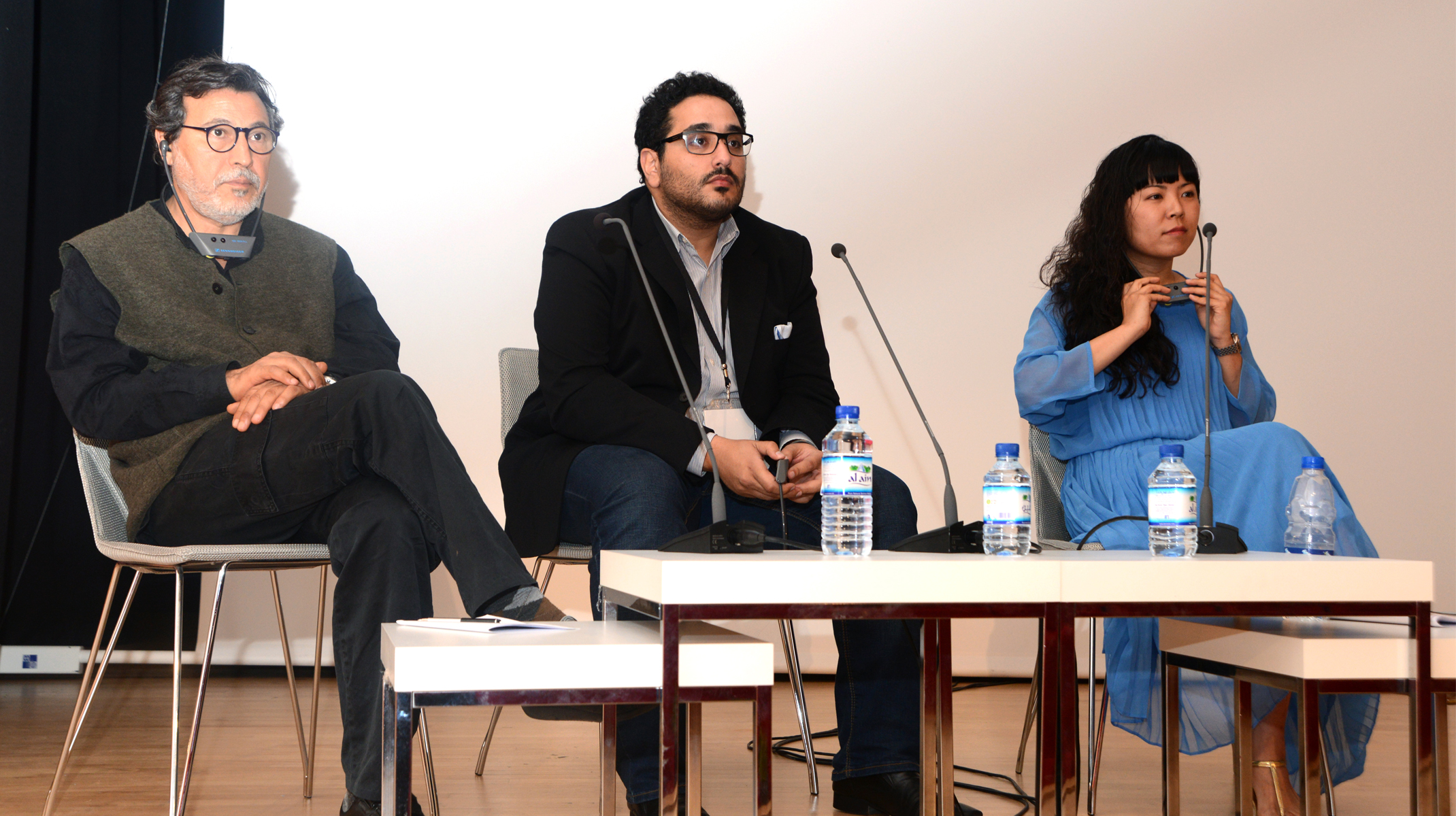The courtyard as constructive void: negotiating perception and memory
March Meeting 2013
The courtyard as constructive void: negotiating perception and memory
Ahmed Jaride, Farid Noufaily and Megumi Matsubara

search


—
March Meeting 2013
The courtyard as constructive void: negotiating perception and memory
Ahmed Jaride, Farid Noufaily and Megumi Matsubara

This presentation examines the courtyard as an open space and a means of exposure, in comparison to the rooms of a house, which constitute a barrier between their inhabitants and the outside world. The courtyard, Jaride will explain, is a space where secrets and inner feelings are revealed, much like the city square which serves as a place for sightseeing, exhibiting and exchanging. Jaride will ask, what is the function of a space like the residential courtyard or the city square? What power do such places possess? What cultural and artistic dimensions does the city assign to such spaces? How does urban life revolve around the city square and the residential courtyard? What do people share and discuss within such spaces?
Ahmed Jaride lives and works in Casablanca, Morocco. Previously, he taught philosophy of art at École Supérieure des Beaux-Arts de Casablanca. He served as Director of the Office of the Minister of Culture until 2005. In 2004 he cofounded GENAP (Grande Exposition Nationale des Arts Plastiques), Casablanca, and in 2006 he launched Zon’Art, magazine de l’art contemporain. He is Director of l’Association Village des Ateliers d’Artiste (AVAA), which he founded in 1998, Vice President of l’Association Marocaine des Arts Plastiques (AMAP), a member of conseil supérieur de La Maison de La Poésie au Maroc, l’Association International des Arts Plastiques, l’Union des Ecrivains du Maroc, and conseil de la Mutuelle Nationale des Artistes, in Morocco.
Farid Noufaily’s study consists of three architectural projects which endeavour to transform semi-public and public spaces within the urban sector of the city. The goal is to turn these places into areas that facilitate public discussion. These sites are creatively engaged in reconciliation and the development of a unified national identity. The sites involved in this study are the typical Lebanese house – specifically its ties to communal heritage, Martyr’s Square (or Place des Martyrs) – a national public space, and the Beirut City Center (or The Egg) – a rehabilitated public memorial of the Civil War. This study explores the ways in which architecture and urban design can serve as agents for developing public domains into what Hannah Arendt calls ‘spaces of appearance’. These are civil spaces that allow for the free exchange of ideas and stories, and help promote the potential rehabilitation and reconciliation of the fractured social fabric in a traumatised society.
Farid Noufaily received his master’s degree in Architecture from the University of Waterloo in Ontario, Canada. His thesis focused on public spaces in areas of conflict and their role in helping reconcile discordant regional and national identities. Titled House of Reconciliation, his work earned a thesis commendation from the university as well as a Bronze Medal Award of Excellence from the Ontario Association of Architects. He has worked for the Ontario-based Paul Raff Studio and RVTR, amongst other offices, contributing to many international award-winning projects. He has taught both graduate and undergraduate courses at the University of Waterloo, and has been a guest critic at the University of Toronto and Ryerson University in Ontario, as well as Cornell University in Rome, Italy, and the University of Michigan, Rome campus. His writing has been published in Arquine Magazine, Wallpaper, Canadian Architect, Architectural Review, Onsite Review, and Domus. His installations have been exhibited in Canada, the United States, Mexico, the United Kingdom, Spain, the United Arab Emirates, Lebanon, Russia, Thailand and Hong Kong. In 2011, Noufaily founded fnOffice, a multi-disciplinary design and research firm based between the Middle East and Europe.
Megumi Matsubara will introduce a series of projects developed in Morocco in 2012 that are grounded in the themes of blindness and dreams. Matsubara will discuss the importance of internal and external sight – what we can see beyond the limits of our vision. She will explore the dichotomy between blindness and sight posed within the context of Arabic culture, particularly through spatiality - houses detached from the external world yet open to the sky from within, and notions that describe external and internal visions simultaneously.
Megumi Matsubara’s recent exhibitions include RÊVEURS RÊVE RÊVES (Dreamers Dream Dreams), La Maison de la Photographie de Marrakech, Morocco, during which she also conversed with art critic and translator Farid Zahi along these same themes. In December 2012 she held an artist talk at Le Cube in Rabat, Morocco, moderated by art historian Colette Apelian. Additionally, Matsubara carried out numerous projects and presentations at various events and institutions in 2012 including, the 6th Rencontres International de la Photo de Fès, Morocco; Marrakech Biennale 4, Morocco; Artbeat Cairo at Darb 1718 in Egypt; Institut Mohamed 5 for the blind and visually-impaired in Fès; and Aomori Contemporary Art Center in Aomori, Japan.